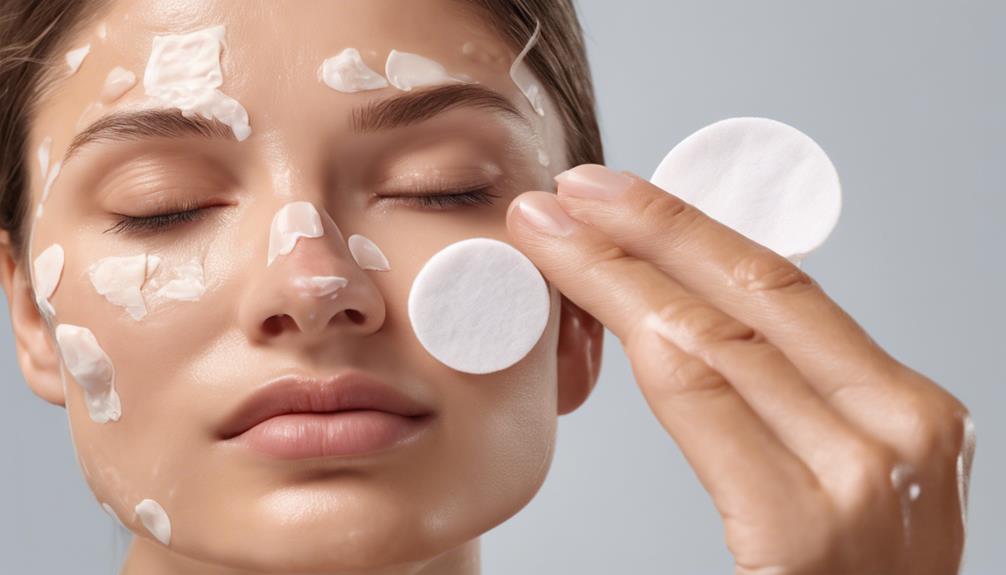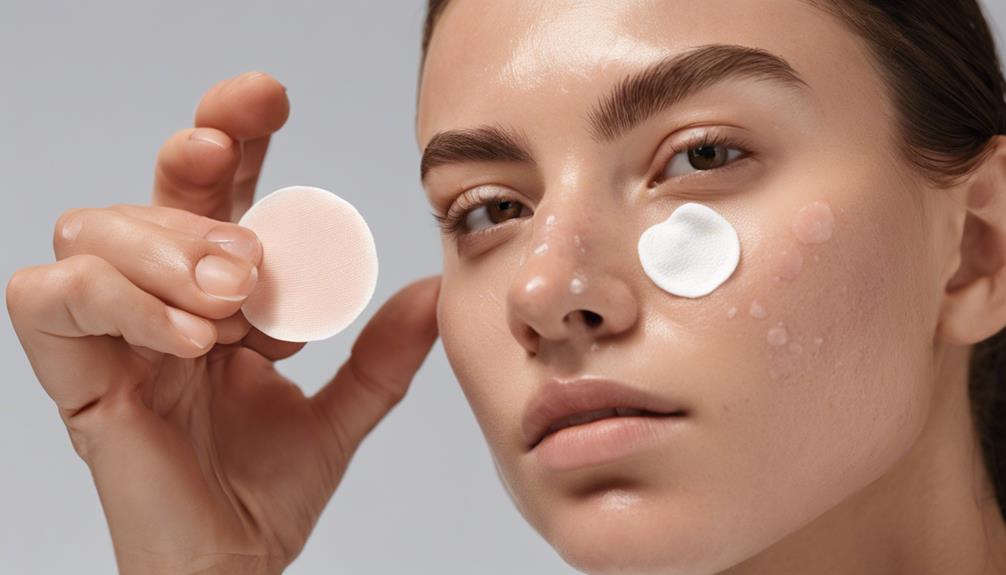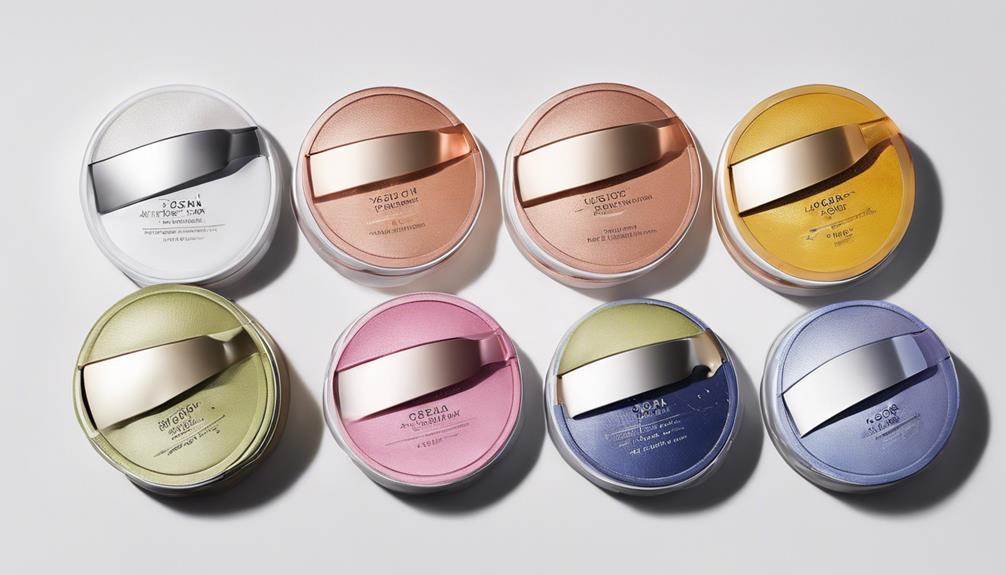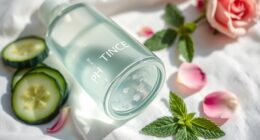After your skincare routine, follow these steps to achieve successful pimple patch results: make sure to clean your skin before applying the patch, carefully choose the size of the patch, wear it overnight for optimal results, avoid using heavy products, and replace the patch when it turns white. Applying the patch in the evening while you sleep is the best time for maximum effectiveness, as it creates a protective barrier and reduces inflammation by morning. For daytime wear, opt for thin, clear patches under makeup for discreet healing. Select the right type of patch based on your skin needs and type of acne. Ensure cleanliness, proper sizing, and timely patch replacement for best results. To learn more tips and techniques for enhancing the effectiveness of pimple patches, check out the benefits of using them.
Key Takeaways
- Apply patches after skincare routine for targeted treatment.
- Choose patches based on acne type and skin needs.
- Ensure clean, dry skin before patch application.
- Replace patches when they turn white for effectiveness.
- Avoid layering products over the patch to maximize results.
Benefits of Using Pimple Patches
By creating a protective barrier against picking and touching, acne patches, also known as hydrocolloid patches, effectively decrease the risk of scarring and infection. These patches work wonders by absorbing excess oil and impurities from pimples, promoting a faster healing process while also reducing inflammation.
The hydrocolloid material in the patches creates a moist environment that aids in the natural skin healing process, making them a powerful tool for combating various types of acne. Incorporating acne-fighting ingredients, these patches not only protect your skin but also deliver active substances to target the pimple directly.
Adding them to your skincare routine can help maintain a clean and hygienic environment on your skin, especially after cleansing and applying other skincare products. Studies have shown that these innovative patches can notably reduce pimple size and redness, making them a popular choice for targeted acne treatment.
Proper Application Techniques
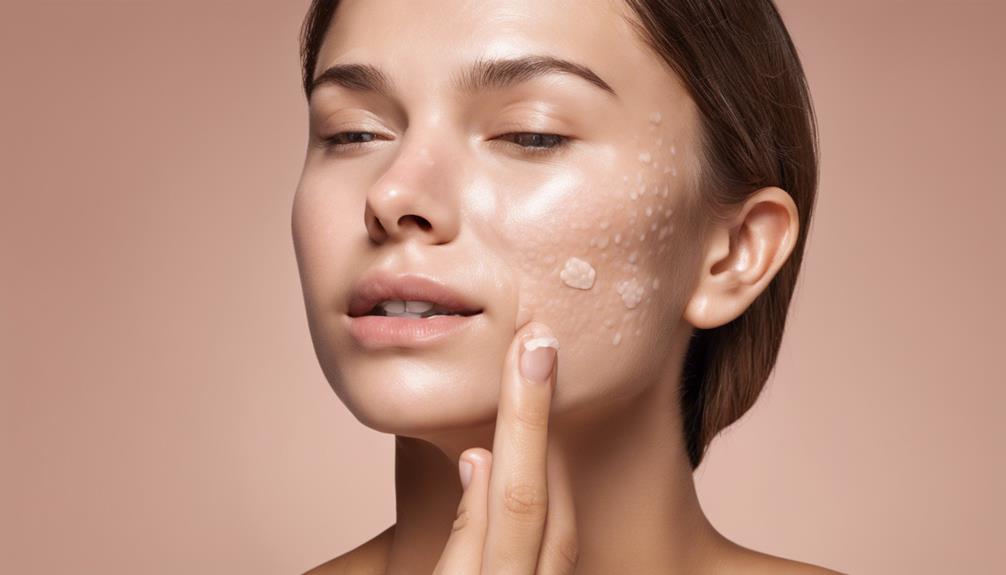
For best results when using pimple patches, make sure that your skin is thoroughly cleansed before applying the patch. This step is important for ensuring that the patch adheres properly to your skin, allowing for maximum absorption of impurities and promoting faster healing. Choosing the right size patch that fully covers the pimple is essential to reap the full benefits of the treatment. Here is a table summarizing key points for proper application techniques:
| Proper Application Techniques |
|---|
| Cleanse skin thoroughly before application |
| Choose the right size patch for maximum coverage |
| Allow patch to remain on for several hours or overnight |
| Avoid heavy skincare products on top of the patch |
| Replace patch when it turns white |
Ideal Timing for Patch Use
For best results, consider applying pimple patches in the evening or overnight when your skin is at rest and the patches can work undisturbed. This timing allows the active ingredients in the patch to effectively penetrate the skin and target specific pimples.
Plus, wearing patches overnight also helps create a protective barrier over the pimple, promoting faster healing without the worry of daytime visibility.
Best Application Time
After completing your skincare routine, the best time to apply pimple patches is when your skin is clean and dry, ensuring ideal adhesion. This perfect timing is essential for the patches to deliver the best results.
Applying them overnight allows the patches to work their magic while you sleep, absorbing impurities and promoting healing. For ideal adhesion and effectiveness, it's important to avoid applying skincare products on top of the patch. Let the patch do its job without any interference.
Leaving the pimple patches on for several hours or overnight is key to maximizing their effectiveness, giving them ample time to absorb fluids and reduce inflammation. Consistent use post-skincare routine can help accelerate the healing process and diminish the visibility of pimples over time.
Overnight Effectiveness
To fully leverage the benefits of pimple patches, consider applying them overnight to maximize their effectiveness in reducing inflammation and promoting healing while you rest. Overnight use of pimple patches is essential as it allows the patches to work on absorbing impurities, creating a barrier against bacteria, and reducing inflammation. By leaving the patches on overnight, they have more time to draw out pus and flatten the pimple by morning. This overnight application helps in promoting healing and prevents further contamination of the affected area. The ideal timing for patch use is before bedtime to make sure that you wake up with visibly reduced pimple size and redness, making pimple patches a convenient and effective skincare solution.
| Benefits | Description |
|---|---|
| Absorbing Impurities | Patches work overnight to draw out impurities and pus from the pimple. |
| Promoting Healing | Overnight use promotes healing of the pimple and reduces redness. |
| Creating a Barrier | Patches create a barrier against bacteria, preventing further contamination. |
| Reduce Inflammation | Helps in reducing inflammation and flattening the pimple by morning. |
Daytime Visibility
Consider choosing thin, clear pimple patches for daytime wear to maintain visibility while discreetly treating your pimples throughout the day. Some patches are designed to be less noticeable under makeup, allowing you to go about your day confidently. These patches often contain ingredients like salicylic acid to target acne effectively.
Opt for hydrocolloid acne patches that blend seamlessly with your skin, ensuring they actually work while you're out and about. Thicker or more opaque patches may be better suited for overnight use to maximize absorption and healing.
Maximizing Patch Effectiveness
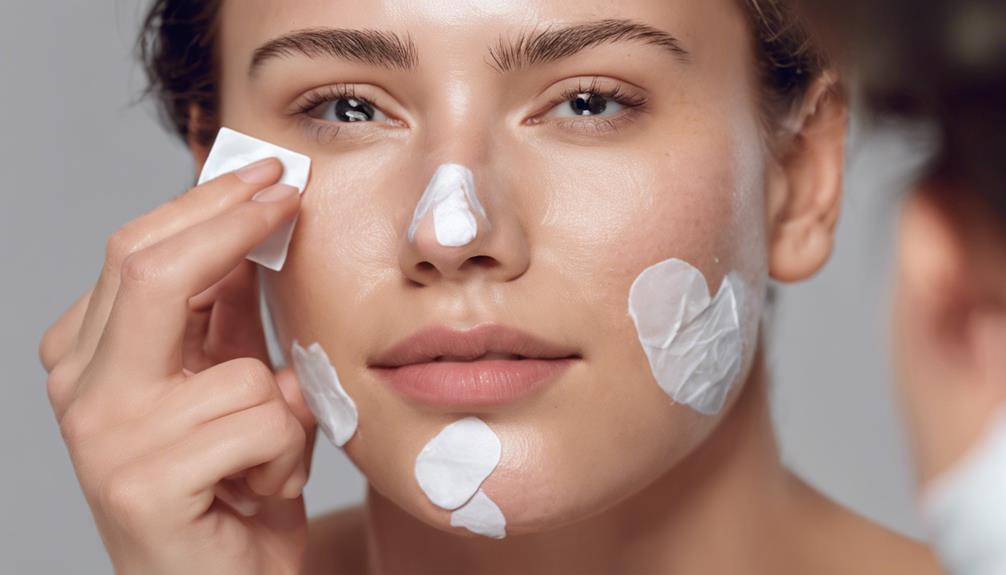
To maximize the effectiveness of your pimple patches, begin by cleansing your skin thoroughly before application to guarantee proper absorption of impurities.
Select a patch that completely covers the pimple for the best protection and healing, and replace it once it turns white to indicate it has absorbed oils and pus.
Avoid layering skincare products over the patch to allow its healing properties to work efficiently.
Patch Application Tips
For maximum effectiveness when applying pimple patches, make sure to thoroughly cleanse your skin before application to promote better adherence and results. Select the right size patch to cover the pimple fully, aiding in targeted treatment. Let the patch sit for hours or overnight to absorb impurities and promote healing. Replace the patch when it turns white, indicating it has absorbed oils and pus. Avoid layering other skincare products on the patch to not interfere with its healing properties. Check out the table below for more insights:
| Types of Acne Patches | Active Ingredients | Benefits |
|---|---|---|
| Hydrocolloid Patch | Salicylic Acid, Tea Tree Oil | Helps heal and protect the pimple from external bacteria |
Overnight Wear Benefits
Maximize the effectiveness of pimple patches by wearing them overnight to promote maximum absorption of impurities and oils while you sleep. The overnight wear creates a moist environment that speeds up healing and reduces inflammation, enhancing the patch's efficacy.
By allowing the patch to work continuously throughout the night, you can wake up to a visibly improved pimple. This method also helps prevent the urge to pick at the blemish, promoting faster healing.
Studies support that overnight use of pimple patches leads to reduced pimple size and redness by morning. Embrace the benefits of overnight wear to make the most of your pimple patches and achieve clearer skin faster.
Removal and Results
Enhance the efficacy of pimple patches by removing them promptly after they change color to white, indicating impurity absorption. Timely removal is crucial to prevent skin irritation, bacterial spread, and guarantee ideal results.
Leaving patches on for too long may lead to skin irritation, hindering the healing process. By following recommended removal times, you can observe reduced inflammation and experience faster healing of pimples.
Consistent and timely removal of pimple patches is key to achieving the desired outcomes and maintaining healthy skin during spot treatments. Remember, quick removal after the patch turns white is the secret to maximizing its effectiveness and ensuring your skin heals efficiently.
Selecting the Right Patch Type
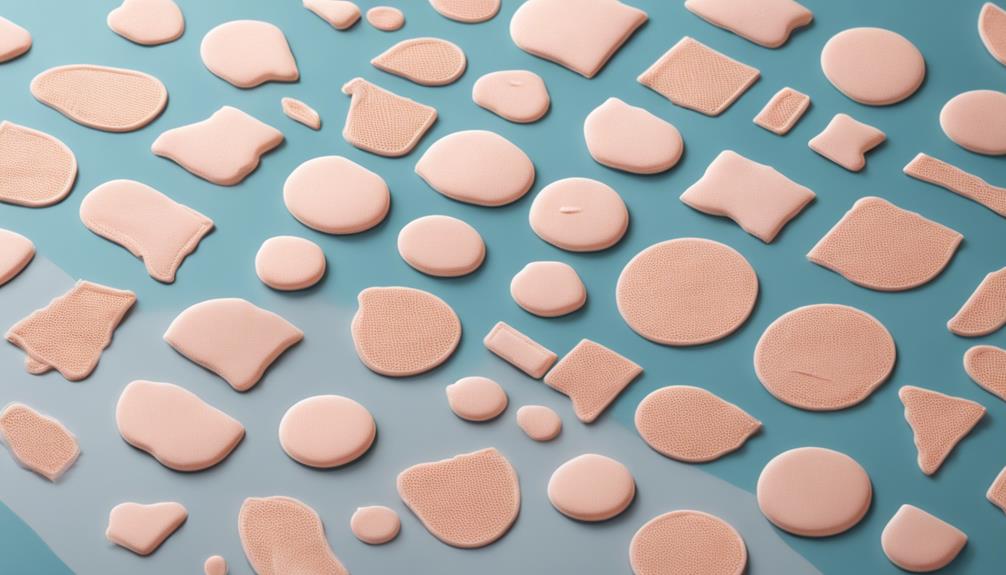
To choose the most suitable pimple patch type, assess your skin's specific needs and the type of acne you're looking to target. For absorbing excess oil and pus effectively, consider hydrocolloid patches.
If you want a patch that penetrates pores and aids in the healing process, opt for salicylic acid patches. Tea tree oil patches offer natural antibacterial benefits and are gentle on sensitive skin.
Microneedle patches provide targeted treatment for deeper acne concerns. Each type of patch caters to different skin requirements, so selecting the right one can enhance the effectiveness of your skincare routine.
Precautions and Tips for Usage
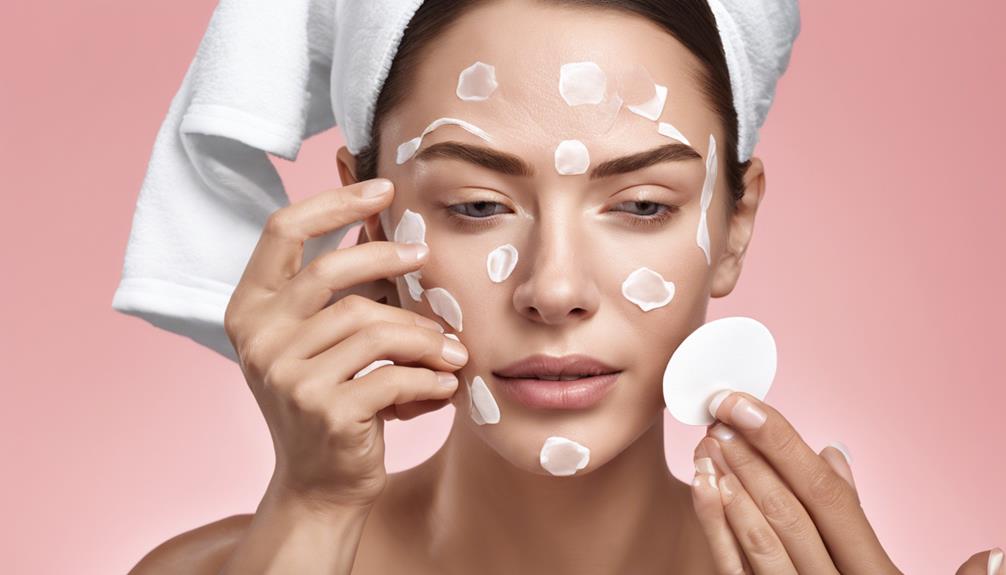
For best results, make sure your skin is thoroughly cleansed before applying pimple patches to promote maximum effectiveness and adherence.
When using pimple patches, make certain you select the right size that completely covers the pimple, creating a proper barrier for healing.
Remember to replace the patch when it turns white, indicating that it has absorbed impurities and needs changing.
Avoid using other skincare products on top of the patch to prevent interference with its healing properties.
Additionally, store the pimple patches in a cool, dry place to maintain their adhesive quality and effectiveness for future use.
Combining Pimple Patches With Skincare Routine
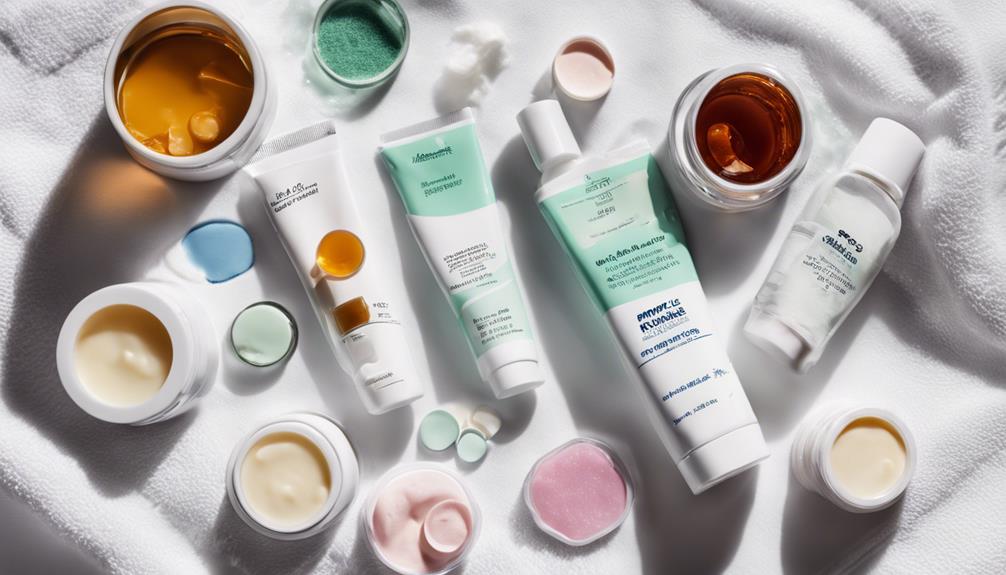
Integrate pimple patches seamlessly into your skincare routine after completing your usual regimen to target specific blemishes effectively. These acne treatments are designed to help prevent and treat individual breakouts without disrupting your overall skincare routine. By including pimple patches in your daily or nightly regimen, you can provide targeted spot treatments while still maintaining the benefits of your other skincare products. Remember, these patches work best when used consistently over time, allowing them to effectively protect and heal blemishes.
To make the most of your spot treatments, apply the pimple patch on clean, dry skin, ensuring that there are no products like serums or moisturizers on the treated area. This practice promotes proper adhesion and absorption of the active ingredients in the patch, enhancing its effectiveness. By incorporating pimple patches into your skincare routine, you can address specific breakouts while keeping your skin healthy and glowing.
Removing Pimple Patches Safely
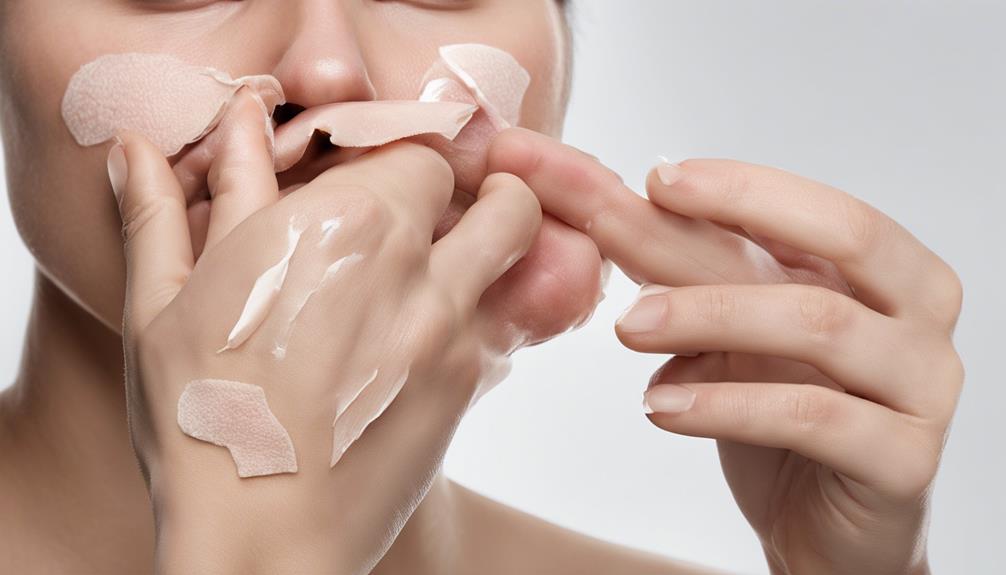
When taking off pimple patches, it's important to do so gently to prevent skin irritation or redness. Here are some tips for removing pimple patches safely:
- Peel the patch gently to avoid causing irritation to your skin.
- Make sure you don't pull or tug on the patch, as this can lead to discomfort and potential damage to your skin's barrier.
- Properly discard the used patch to maintain hygiene and prevent bacterial contamination.
- If the patch is still white and hasn't absorbed much fluid, consider leaving it on for a few more hours for best acne spot treatment absorption.
Troubleshooting Patch Application Issues
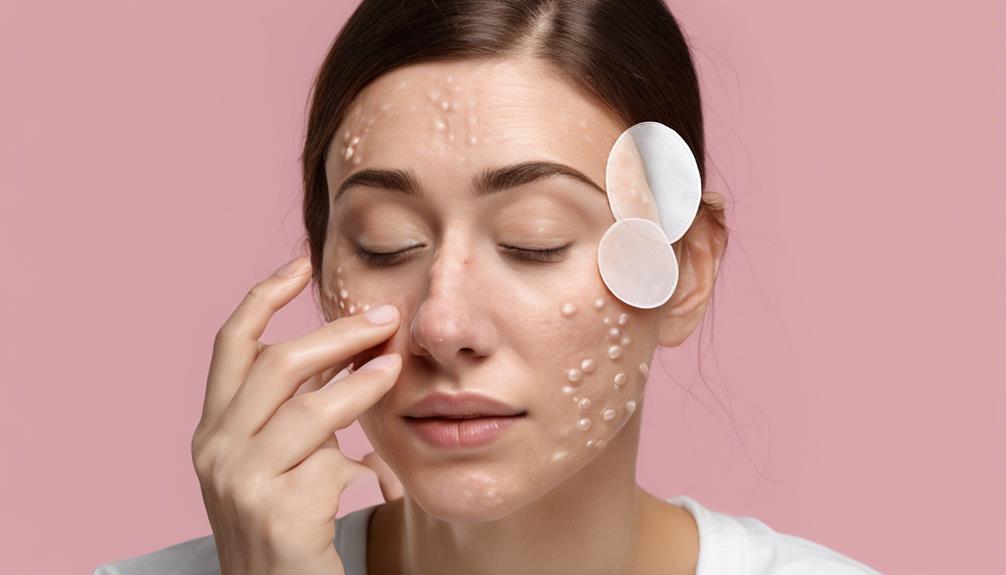
To troubleshoot any issues with applying the pimple patch, make sure your skin is thoroughly clean and dry before application. Dead skin cells and excess oil can hinder the patches from sticking properly.
Ensure the patch is the right size for the pimple to help prevent it from peeling off prematurely. Avoid applying skincare products underneath the patch, especially if you have acne-prone or dry skin, as it may affect adhesion.
Using tweezers can help you handle the patch more hygienically and prevent contamination. If the patch starts to peel off, gently press it back into place to secure it and maximize its effectiveness.
Addressing patch application problems is important to get the most out of your pimple patches and achieve clearer skin.
Frequently Asked Questions
Do You Put Pimple Patches on After Your Skincare Routine?
Yes, you should put pimple patches on after your skincare routine. Applying them post-skincare allows the active ingredients to work effectively on your skin before sealing in with the patch. This process guarantees better adhesion, absorption of impurities, and healing promotion.
Placing pimple patches after serums and moisturizers forms a protective barrier that boosts ingredient absorption. Following this order maximizes benefits from both your skincare routine and pimple treatment.
What Stage Should I Use a Pimple Patch?
When to use a pimple patch matters. Apply it at the first sign of a pimple with visible whiteheads or pus. This early stage is key for the patch to work best.
It helps prevent picking, speeds up healing, and protects the pimple. For deep cystic acne, patches may not be as effective. But for surface-level pimples, they can reduce inflammation, absorb oil, and shield the pimple from external factors.
How Do You Take Care of a Pimple After Using a Pimple Patch?
After using a pimple patch, cleanse the area gently to remove residue and keep skin clean.
Avoid heavy skincare products to let the area breathe and heal effectively.
Moisturize with a lightweight, non-comedogenic moisturizer.
For added treatment, consider spot treatments or acne-fighting serums.
Wait before reapplying a new patch to prevent skin irritation.
Take care of your skin post-patch to aid healing and prevent further breakouts.
Can I Put a Pimple Patch Over Acne Treatment?
You can put a pimple patch over acne treatment. Wait for the treatment to dry on your skin before applying the patch.
This allows both products to work effectively without interfering with each other. By combining them, you create a protective barrier that speeds up healing.
Remember to let the treatment absorb completely before sealing it with the patch for best results.
Which Skincare Routine Should I Follow When Using Pimple Patches?
When using pimple patches, it’s important to follow the right skincare order. Start with a gentle cleanser, then apply any serums or treatments. After that, put on the pimple patches to target specific spots. Finish with moisturizer to keep the skin hydrated and nourished.
Conclusion
To sum up, using pimple patches after skincare can be a game-changer for combating pesky breakouts.
By following proper application techniques, selecting the right patch type, and combining them with your skincare routine, you can maximize their effectiveness.
Remember to remove them safely and troubleshoot any application issues.
With patience and consistency, pimple patches can be a valuable tool in your skincare arsenal.
